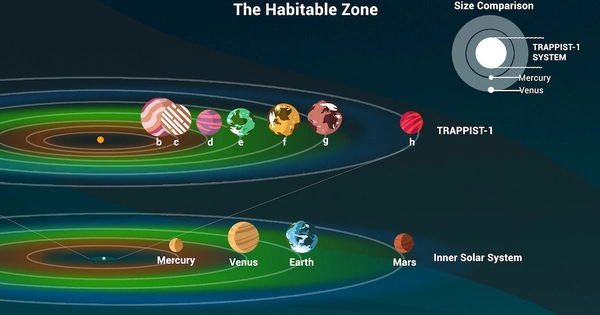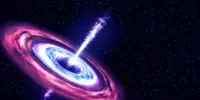Professor Amri Wandel of the Hebrew University of Jerusalem has revealed research that has the potential to change our understanding of habitable exoplanets. Professor Wandel advances the concept of subglacial liquid water as a vital ingredient in widening the borders of the conventional Habitable Zone in a recent paper published in the Astronomical Journal.
The traditional Habitable Zone, informally known as the “Goldilocks Zone,” is typically defined as the zone surrounding a star where conditions allow for the presence of surface liquid water and, by extension, life as we know it. Professor Wandel’s research, on the other hand, provides a new perspective by demonstrating that the presence of subglacial liquid water can significantly extend this zone.
One of the most important findings of this research is the possibility of expanding the Habitable Zone inwards for tidally locked planets circling M-dwarf stars, which are widely seen as candidates for discovering spectral evidence for life (so-called biosignatures) in exoplanets. The research shows how an atmosphere and liquid water might live on these planets, stretching the boundaries of the Habitable Zone further than previously thought.
This work demonstrates that the Habitable Zone of red dwarfs is likely significantly broader than previously assumed, and planets within it have the capacity to maintain water and an atmosphere.
Professor Wandel
Furthermore, the study proposes that subglacial liquid water can expand the Habitable Zone beyond the conservative Habitable Zone’s outer bounds. These discoveries open up the prospect of liquid water on a broader variety of exoplanets than previously thought, giving tantalizing possibilities for the search for extraterrestrial life.
This study’s connection to recent findings made by the James Webb Space Telescope (JWST) is an interesting implication. The discovery of atmospheric water vapor on GJ 486 b, a rocky Earth-sized exoplanet, and evidence for an ocean on K2-18b, a Super Earth exoplanet, both point to the presence of liquid water, possibly organic chemistry, and the possibility of life on such celestial worlds. This finding lends empirical support to the long-standing debate of whether exoplanets circling M-dwarf stars may support habitable circumstances.

Professor Wandel remarked, “This work demonstrates that the Habitable Zone of red dwarfs is likely significantly broader than previously assumed, and planets within it have the capacity to maintain water and an atmosphere. The latter conclusion is empirically supported by recent findings of water on such exoplanets by the Webb Telescope, particularly in K2-18 b, as predicted in the article submitted two months prior. In particular, it may optimize the target allocation and priority for biosignature research by JWST.”
Professor Wandel’s research explains how water on terrestrial planets circling M-dwarf stars can survive beneath a subglacial melting layer, providing a fresh perspective on liquid water sustainability. The paper goes on to look at how the detection of water on distinct exoplanets can help constrain their atmospheric properties.
Finally, Professor Amri Wandel’s research highlights the revolutionary potential of subglacial liquid water in enlarging exoplanets’ Habitable Zones. This revelation not only increases our understanding of habitable habitats in the universe, but it also sheds light on the possibility of life beyond our planet.
















